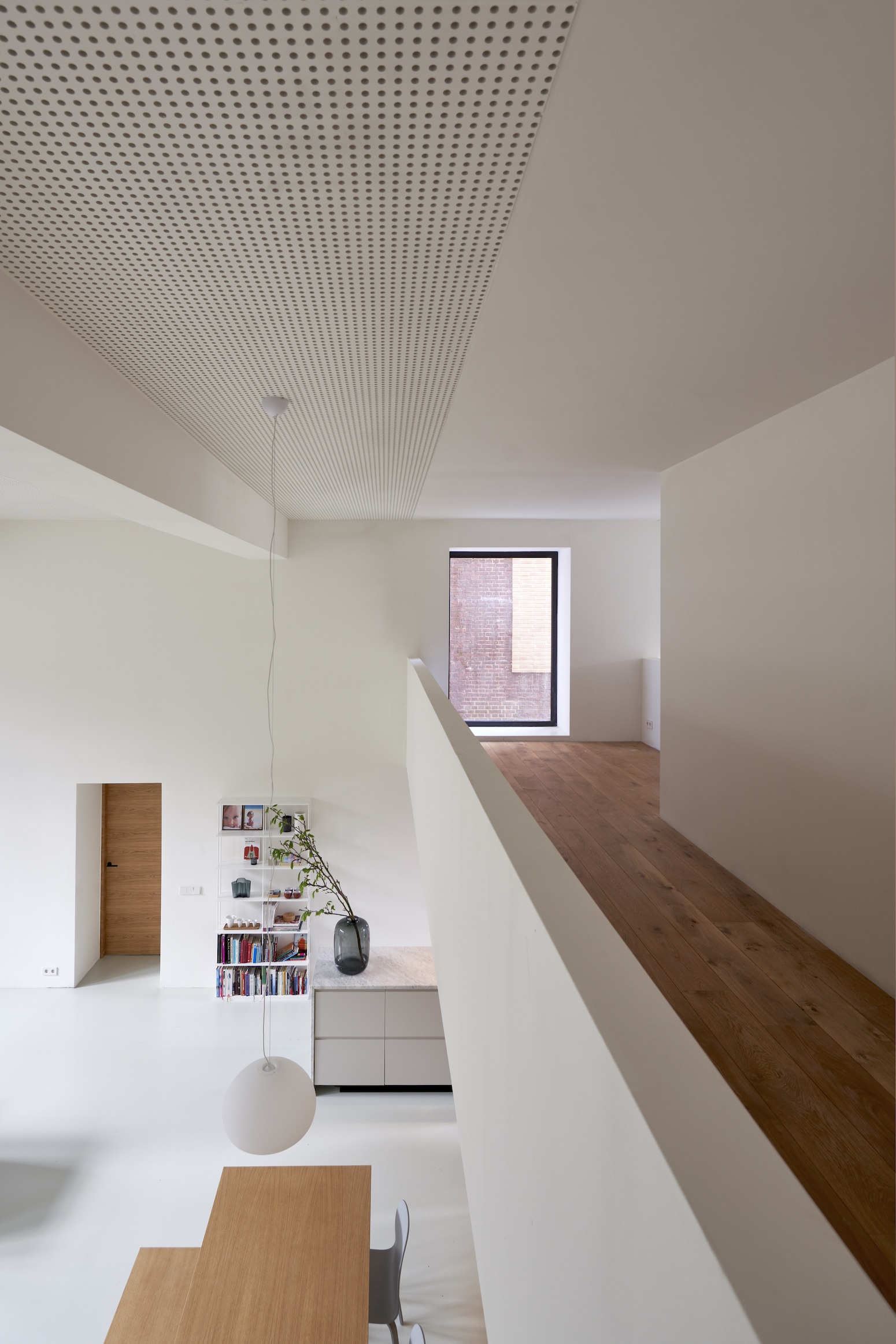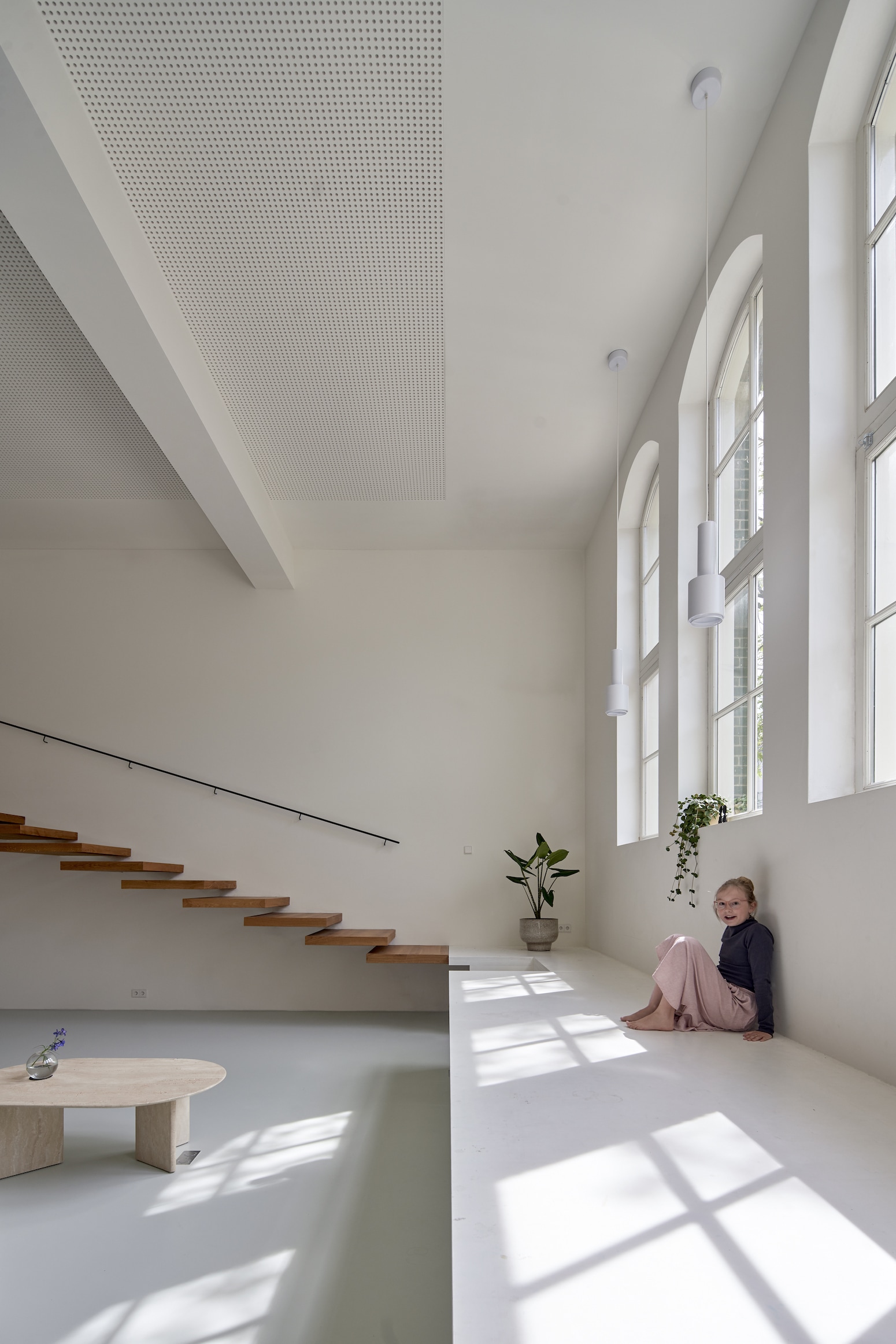The Gym Loft is a minimal house located in Rotterdam, The Netherlands, designed by eklund_terbeek. The Gym House is situated in the gymnastics building of an early 20thcentury school complex in Rotterdam North. The dwelling, for a family of four, consists of the ground floor gym room and an adjacent hallway and storage zone. Starting point for the design was the limitations of the site in terms of light and privacy, and the exceptional dimensions of the main space. The ceiling height of more than five meters offered possibilities for adding new intermediate floors and more intimate areas. Due to the preservation of a large existing mural on the façade opposite the entrance, the possibilities for adding windows was limited, and with two facades facing the street, privacy was an issue.
The spatial organization is largely determined by the decision to situate the main living area by the large front façade windows, while at the same time realizing a direct connection to the garden through a series of new openings and placing bedrooms where it was possible to add windows. A closed box containing the individual private spaces is placed in the double height space. The children’s quarter on the ground floor has two separate, partly double height bedrooms and a shared walk-through playroom and bathroom. On top of the children’s area the calm and secluded master bedroom with en suite bathroom is situated. Stepping out of the master suite, a balcony with a small lounge area provides an overview over the living space. The living room podium creates a lookout spot on level with the original windows, and doubles as an xxl work desk and a storage unit. From here, the entresol balcony can be reached via a large floating stair. A second hidden stair behind the kitchen creates a fast sneak route and a circular promenade through the dwelling.
The extraordinary dimensions of the space required a few large gestures. The original load-bearing beams have been exaggerated in size, and together with the balcony, the podium and the kitchen island they form a dynamic composition of horizontal elements that tie the different parts of the dwelling together, emphasize sightlines and encourage movement through the space. The materialization of the apartment is characterized by a light and soft color scheme with graphic accents. Walls, ceiling and beams are rendered white and the ceiling is partly clad in sound insulating boards which adds texture and gives the large space a pleasant acoustic. Interior elements, such as the oversized floating stair and wall panels in oak wood provide warmth and a sense of continuity. The long kitchen island with its white carrara marble countertop adds subtle shades of white and light grey. Upstairs in the master bedroom, the oak floor is complemented by the travertine marble in the en suite bathroom.
Photography by René de Wit














